Friends of the Tenth – May 2021
Honorary President: Jennifer, Lady Gretton DCVO JP
Patron: Air Vice Marshal Ranald Munro CBE TD VR DL
Dutch Patron: Dr Robert Voskuil
Padre: The Reverend Brian McAvoy MBE MA RAF (retd)
Newsletter, May 2021
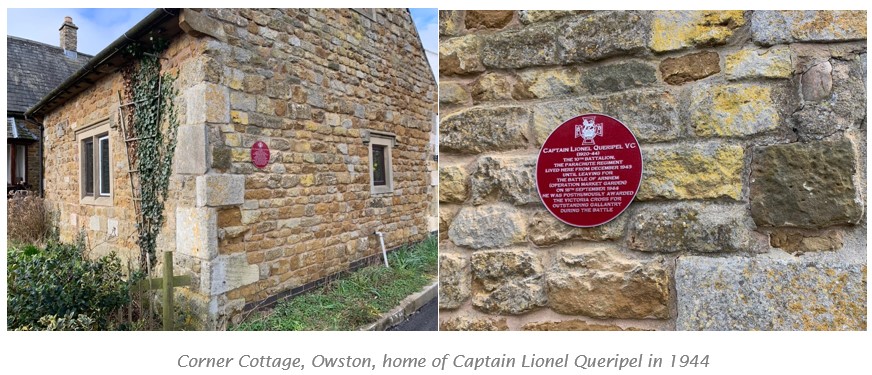
The 10th Battalion Trail
Despite the difficulties of the last twelve months or so, we have surged ahead with a number of initiatives. Principal among these is the 10th Battalion Trail which links the various locations and properties that played an important part in the Battalion’s history during its time in Leicestershire during 1943-44.
Our maroon heritage plaques can now be seen in the villages of Somerby, Thorpe Satchville, Owston and at Burrough Court. Yet to be installed and currently being manufactured, is the one for RAF Spanhoe (not in Leicestershire but Northamptonshire) which will soon reside alongside the Memorial to the USAAF 315th Troop Carrier Group at the entrance to the old airfield.
In Somerby village, the billets for ‘HQ’ and ‘A’ Companies, as well as the Dining Hall, Battalion HQ and Officers’ Mess and Sergeants’ Mess have all been researched and marked. Similarly, ‘B’ and Support Companies in Thorpe Satchville and ‘D’ Company and part of ‘S’ Company at Burrough Court, are all in place.
We were able to confirm that, before he left, never to return, in September 1944, Lionel Queripel VC lived in, tiny, Corner Cottage, in the bucolic hamlet of Owston. The current owner of the cottage recalls a visit in the 1990’s by Captain Queripel’s sister who, when he answered the door, exclaimed ‘Oh! It’s Lionel’s cottage’.
We will soon be offering a comprehensive and informative guidebook describing the trail in detail and offering recommendations for walking, cycling or driving around the various locations. In addition, there will be information on places to drink, eat and stay.
The guidebook should be published in the next few months and you will receive notification both on our social media and by email when and how you can purchase a copy.
The Memorial to the Post-War 10th Battalion
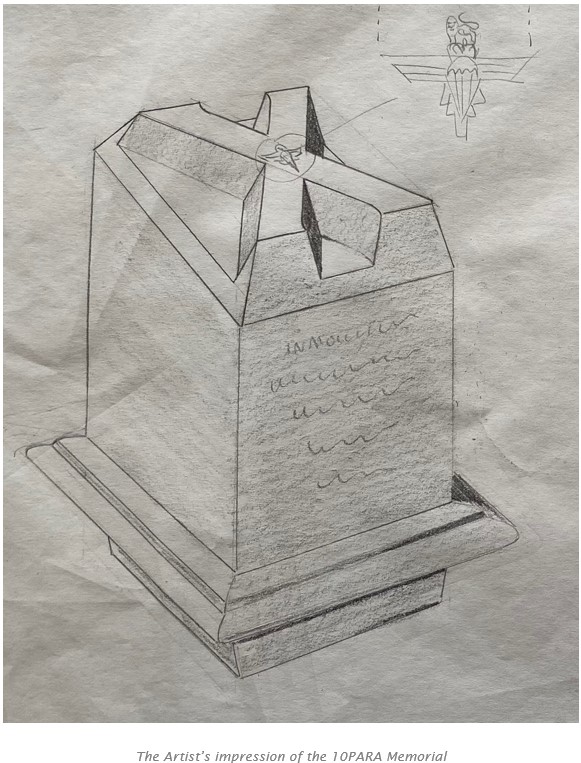
You will know what a big part the men of the post-war 10PARA have played in supporting and fund raising for our Memorial which remembers their WW2 forbears. Those of us who were there, will never forget their lines, resplendent in berets and medals, marching down the hill prior to the unveiling of the 10th Battalion Memorial in September 2019. For some time, we have been talking with several members of the Battalion about a modest Memorial to remember those who lost their lives whilst on service between 1947 -1999.
George Morris, also a member of the post-war Battalion, has supplied the stone and introduced us to his friend and colleague, renowned sculptor, Ivan Cudby. Ivan has designed a distinctive stone, a work of art in its own right, that will stand in our Memorial Garden. It features the Roman numeral ten that was the unit’s DZ flash. We are, once again, indebted to our benefactors, Barratt Developments, who have funded this project in its entirety, as well as George and Ivan who have both given substantial discounts and Dan Doherty of DAB Ltd who are installing the groundworks. We hope that this lovely sculpture will be installed by, and unveiled during, our annual commemorations in September.
Our Dutch Friends – the best in the World!
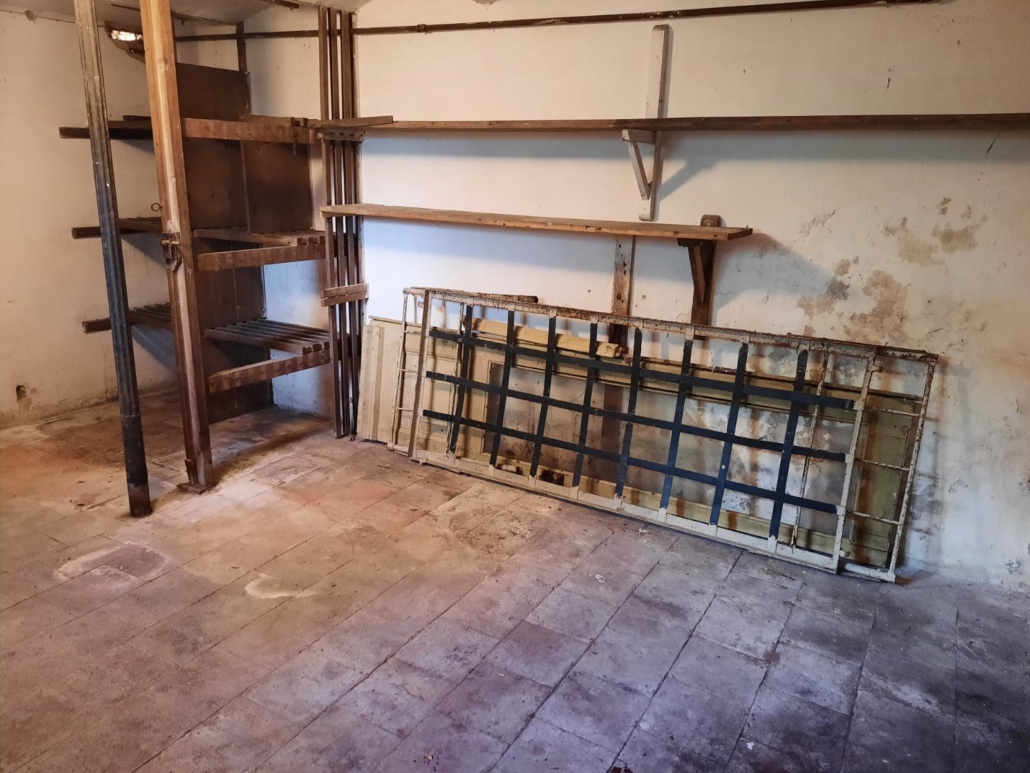
The Cellar at number 2 Annastraat, Oosterbeek – Liset Vos
Whilst working hard to raise funds for her own chosen charity, Kiss Goodbye to MS, Liset Vos van Der Ven is relentless in pursuing our interests in The Netherlands. Due to its potential sale, Liset has been keeping a watching brief on number 2 Annastraat in Oosterbeek. You will no doubt remember that this was the last HQ of the Battalion during the final days of Operation Market Garden.
In the cellar of the house, Lt. Colonel Ken Smyth lay dying of his wounds and Pte. Albert Willingham carried out the outstanding, selfless act of courage that cost him his life. Albert saved the lives of Mrs. Bertje Voskuil and her son by throwing himself into the path of a German grenade which was thrown down the steps to clear the cellar.
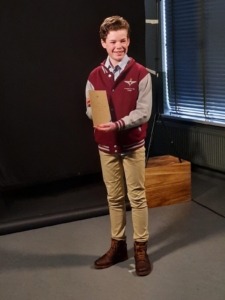
Jelle at The Airborne Museum with Frank Burton’s 1945 Somerby Order of Service
The house has now been sold and Liset contacted the new owners, Annet and Herbert Burlage, to explain the historical significance, especially of the infamous cellar.
The great news is that Annet and Herbert are very keen to host some kind of memorial to mark the place and remember Albert’s ultimate sacrifice. Possibly this will take the form of one of our maroon Parachute Regiment plaques or possible something far more grand?
We mustn’t forget our poster boy, Liset’s son, Jelle, who also continues in his mission to spread the word about his favourite battalion.
Recently Jelle was at The Hartenstein Airborne Museum, recording his own story told about Private Frank Burton’s copy of the Order of Service from the Somerby Church service – when the tablet to The Fallen of the Battalion was dedicated in December 1945. Jelle’s recording will remain for posterity.
Jelle has highlighted Private Burton and it seems opportune to include below, Gerrit Pijpers excellent biography of Frank.
Private Frank Burton
A Biography by Lt Col Gerrit Pijpers
10th Parachute Battalion, A Company, 5 Platoon, Army Number 4975961
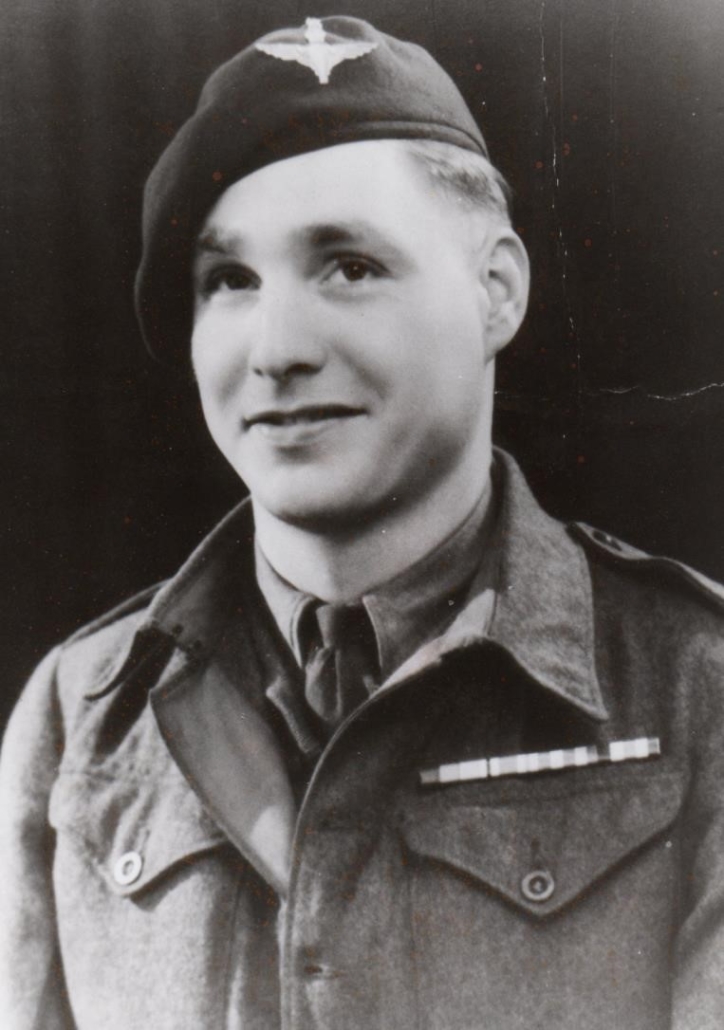
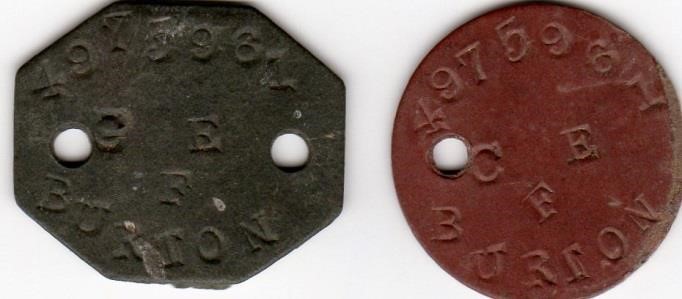
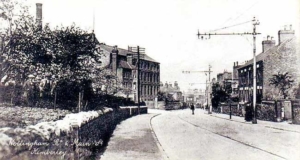
Kimberley Nottingham
Frank Burton was born on 22nd May 1923 in Durham, North Shields. During the mid 1930’s, his parents moved to Kimberley, near Nottingham[1]. On the 9th May 1938 (Frank was not yet 15) he enlisted with The Sherwood Foresters (Territorial Army). His certificate of discharge, from The Sherwood Foresters, mentions Boy as his rank, due to his very young age[2].
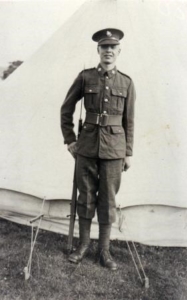
Sherwood Foresters, 1938 (S. Dyos)
On 9th September 1938, Frank became a regular soldier with The Cameronians Highland Light Infantry (Scottish Rifles) and on 26th October 1942, he went with his unit to the Mediterranean as part of the Mediterranean Expeditionary Force (M.E.F.). On 28th January 1943 he joined the Army Air Corps (10th Battalion, The Parachute Regiment)[3].
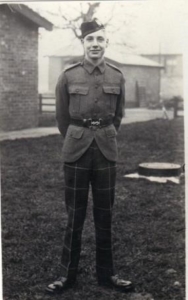
Cameronians Highland Light Infantry 1938 (S. Dyos)
The 10th Parachute Battalion was stationed in Kabrit, as part of the 4th Parachute Brigade, under the command of Lieutenant Colonel K.B.I. Smyth. Kabrit was a village along the Suez Canal in Egypt about 150 kilometres east of Cairo.
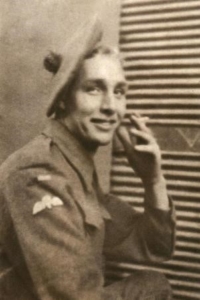
Frank after receiving his ‘Wings’ (S. Dyos)
All members of the Battalion had to undergo a parachute training course carried out at the Middle East Training School at RAF Kabrit in Egypt. Initial parachute training included, jumping off the back of moving vehicles and finished with five parachute descents from an aircraft. Anyone failing to complete a descent was returned to his old unit. Those men who successfully completed the parachute course, were presented with their parachute wings. Frank passed course number 20 at Kabrit and received his wings.
Airborne soldiers were expected to fight against superior numbers of the enemy armed with heavy weapons including artillery and tanks. So training was designed to encourage a spirit of self-discipline, self-reliance and aggressiveness. Emphasis was given to physical fitness, marksmanship and fieldcraft.
A large part of the training regime consisted of assault courses and route marches. Military exercises included capturing and holding airborne bridgeheads, road or rail bridges and coastal fortifications. At the end of most exercises, the Battalion would march back to their barracks. An ability to march long distances at speed was expected: airborne platoons were required to cover a distance of 50 miles (80 km) in 24 hours and battalions 32 miles (51 km).
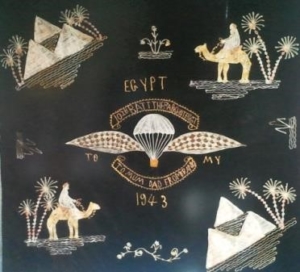
Embroidery by Frank, Egypt, 1943
The 4th Para Brigade had been transferred to the 1st Airborne Division in June and after being moved to Ramat David in Palestine, the 10th Parachute Battalion, as part of the 4th Parachute Brigade, saw action for the first time, in Italy, during September 1943.
A shortage of transport aircraft kept the battalion out of the Allied invasion of Sicily. Other units of the division however did take part. The 1st Airlanding Brigade took part in Operation Ladbroke and the 1st Parachute Brigade in Operation Fustian. Both brigades suffered heavy casualties, so that by the time Operation Slapstick was proposed, only the 2nd and 4th Parachute Brigades took part.
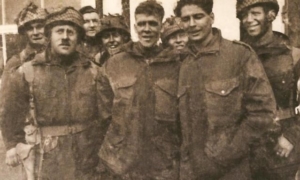
Frank, left back row, 10th Battalion (S. Dyos)
Operation Slapstick was, in part, a deception operation to divert German forces from the main Allied landings and also an attempt to seize intact the Italian ports of Taranto, Bari and Brindisi. The lack of air transport meant that the division’s two available brigades had to be transported by sea. They would cross the Mediterranean in four Royal Navy cruisers with their escorts. If the landing was successful, the 78th Infantry Division in Sicily and the 8th Indian Infantry Division in the Middle East, under the command of the V Corps, would be sent to reinforce the landings.
The 4th Parachute Brigade only had The Tenth and 156 Parachute Battalions available to take part in the landings. On 9th September 1943, the same day as the Salerno landings by the U.S. 5th Army, the Battalion, having crossed the Mediterranean in HMS Penelope landed at Taranto unopposed. Their first objective was the airfield of Gioia del Colle, 30 miles (48 km) inland, was secured on the 16th September. However en route to the airfield near the town of Castellaneta, the Battalion came up against a German roadblock defended by a Fallschirmjaeger unit of the 1st German Parachute Division.
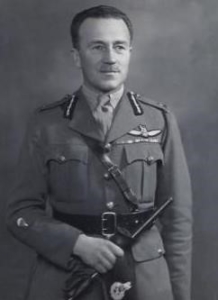
Major General G.F. Hopkinson
During their assault on the roadblock, the Divisional Commander, Major–General George F. Hopkinson, observing the action, was hit by a burst of machine gun fire and killed.
At the same time, at Basilio, the 156 Parachute Battalion, carried out a successful flank attack on Fallschirmjaeger defending the town. Two days later, having been only involved in minor skirmishes, the 10th Battalion reached Bari and Brindisi. Playing no further part in operations in Italy, the Battalion was withdrawn by sea to the United Kingdom.
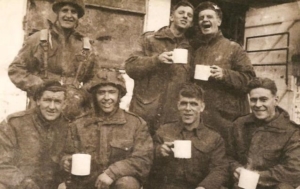
Frank, left, back row, 10th Bn (S. Dyos)
Withdrawn to the United Kingdom in November, the Battalion arrived on the 10th December 1943. They were to be stationed in High Leicestershire, in and around the villages of Somerby, Burrough on the Hill and Thorpe Satchville. The Tenth prepared with many exercises and training jumps for the upcoming invasion. But when D-Day, 6th June 1944, came, the whole The 1st Airborne Division of which the 10th Parachute Battalion was part, was taken into reserve. For the men of the Battalion this was a bitter disappointment.
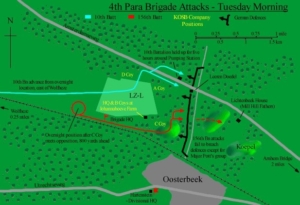
10 Bn route of advance, 19th September
On Monday 18th September 1944 finally, the day came that the Battalion and all the others of the 4th Parachute Brigade went into action. Operation Market Garden was already a day in progress and the 10th Battalion had been given orders to land at Ginkel Heath (Drop Zone Y), about 8 miles west of Arnhem.
Shortly before departure for Holland (this is what Frank Burton told his Dutch friend Mr. Cees Meijer) – Private[4] Frank Burton got the order that he was to become the batman to Lieutenant Colonel Kenneth Smyth, who was the officer commanding (OC) of the 10th Parachute Battalion. Although Frank is not mentioned in the chalk list, Frank told that at the last moment he was ordered to fly in the aircraft with his OC[5].
On Monday 18th September 1944, Frank landed by parachute on Drop Zone Y, on the north side of Ginkel Heath. He went through the woods towards the farm Johannahoeve (north west of Oosterbeek village). Frank was wounded there at noon on Tuesday, whilst trying to get back over the railway line. Frank was hit by two rounds in his head and more in his upper leg. He hid in a ditch and took a shot of morphine. Several hours later as dusk fell, Frank had lost a lot of blood and decided to surrender. He fired his revolver in the air to attract the attention of the Germans[6].
Frank was taken prisoner (the field was already in enemy hands) and the Germans took him to a farm called De Schaapskooi7.
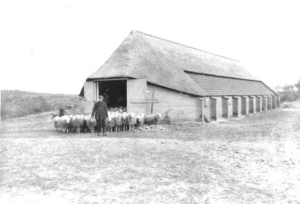
Sheep shed near Johannahoeve with shepherd. Mr van Neighbors. (Collection Kees Klaver Cor de Winkel)
The farm was a first aid post during the battle, which was in hands of the Germans. The Germans treated him correctly and brought him the next day (Wednesday 20th September) with other wounded men to a hospital in Apeldoorn, where they amputated his right leg. Lieutenant Colonel Smyth was fatally wounded in Oosterbeek on 21st September 1944 and died in the same hospital in Apeldoorn.
The strange thing is that no private Frank Burton has been listed in any of the hospitals in and around Apeldoorn village. But due to the fact that we know that Frank was in the same hospital as Lieutenant Colonel Smyth, I have asked a friend who is a historian on the hospitals in and around Apeldoorn during the Second World War. We believe that Frank was listed as private Albert Burton and on the 10th October 1944 was taken into the Juliana hospital (general hospital in Apeldoorn).
Long after the war Frank told his Dutch friend, Mr. Cees Meijer from Oosterbeek, that his leg had been amputated in the Saint Liduina hospital in Apeldoorn (there is nothing mentioned of this amputation in the medical records of either the St Liduina hospital or the Royal Army Medical Corps)[7] Frank (Albert) Burton was discharged from the Juliana hospital on 26th October 1944.
Prisoner of War
Stalag XIB Fallingbostel
Frank was taken by train to a prisoner of war camp (or in German a Stalag, which means Stammlager) at Stalag XIB Fallingbostel in Lower Saxony, near Hannover[8] in north-western Germany. The camp was built in 1937 as accommodation for workers building the barracks at the nearby Westlager (Western Camp) of Truppenübungsplatz Bergen (Military Training Area Bergen).
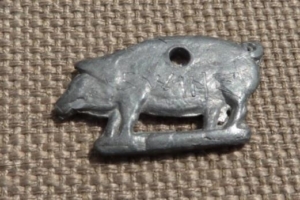
Lead pig brooch made by Frank in Stalag X1B. ‘Swine’ engraved on front, ‘Hund’ on back
In September 1939 the huts were fenced in and designated Stalag XIB. The first prisoners to arrive were Polish in late 1939, followed by French and Belgians the following year. By the end of 1940 around 40,000 POW’s were registered there, although only about 2,500 of these were housed at the camp, with the majority assigned to various Arbeitskommando (work camps) in the area. Close by were the barracks of LandesschützenBataillon 461 (Local Defence Battalion 461), who guarded the camp. This Army unit was composed of men considered too old or otherwise unfit for front-line service and were commonly used for guard and garrison duties.
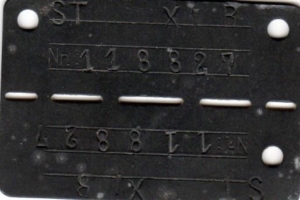
Frank’s Stalag XIB POW name tag
In November 1944 British paratroopers captured at Arnhem arrived at Fallingbostel. Led by the formidable Regimental Sergeant Major John C. Lord of 3rd Battalion, Parachute Regiment, they set about raising the standards of the camp. Lord insisted on proper military discipline with regular exercise and parades. At that time 17,000 POW; mostly British, but also Russian, Polish, Yugoslav, French, and American prisoners were crammed into the camp causing severe overcrowding. Each hut contained 400 men, though it had bunks for only 150. By February 1945 the POWs were suffering from lack of food and medical supplies exacerbated by the influx of several hundred American POW captured in Battle of the Bulge. These newer arrivals found themselves accommodated in tents.
Stalag IXC
In November 1944 Frank had been presented to a German medical viewing board and they decided that due to his leg amputation he could be sent home[9]. He was sent to a hospital in the town of Obermaßfeld, southwest of Erfurt, under the administration of Stalag IXC[10].
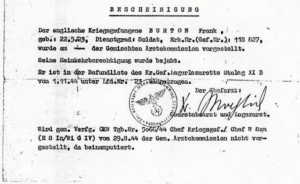
Frank’s Stalag XIB POW name tag
Stalag IXC was a German prisoner-of-war camp for Allied soldiers in World War II. Although its headquarters were located near Bad Sulza, between Erfurt and Leipzig in Thuringia, its sub-camps Arbeitskommando were spread over a wide area, particularly those holding prisoners working in the potassium mines, south of Mühlhausen.
Hospitals
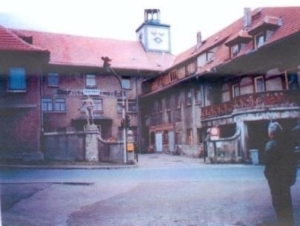
Reserve-Lazaret IXC (a)
As mentioned before, a large hospital, Reserve-Lazaret IXC(a) was under the administration of Stalag IX-C. This was in the town of Obermaßfeld, south-west of Erfurt, in a three-story stone building that was previously a Strength Through Joy (HitlerJugend) hostel.
The hospital was operated by British, Canadian and New Zealand medical staff. Its staff was considerably
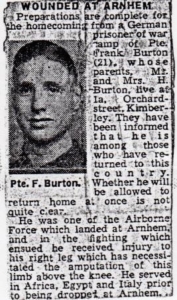
Newspaper cutting ‘Wounded at Arnhem’
augmented in October 1944 with the arrival of an entire ambulance team of the British 1st Airborne Division, captured at Arnhem. Frank was repatriated on 5 February 1945 and discharged 29 March 1946[11].
After the war Frank Burton became a Gold/Silversmith polisher and was an active member of the British Limbless Ex-Servicemen’s Association. He participated in the Disabled Olympics where he won Gold Medals in the Backstroke and the Discus.
In 1983 Frank joined the Parachute Regimental Association and carried out bugler duties on numerous occasions on the Arnhem
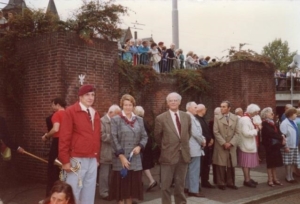
Frank, Netty and Cees Meijer, Arnhem 1989 (N. Meijer)
pilgrimages[12]. On many of these pilgrimages he stayed with his Dutch friends, Cees and Netty Meijer from Oosterbeek.
Frank died suddenly at his home in Cyprus in 1992, aged 69.
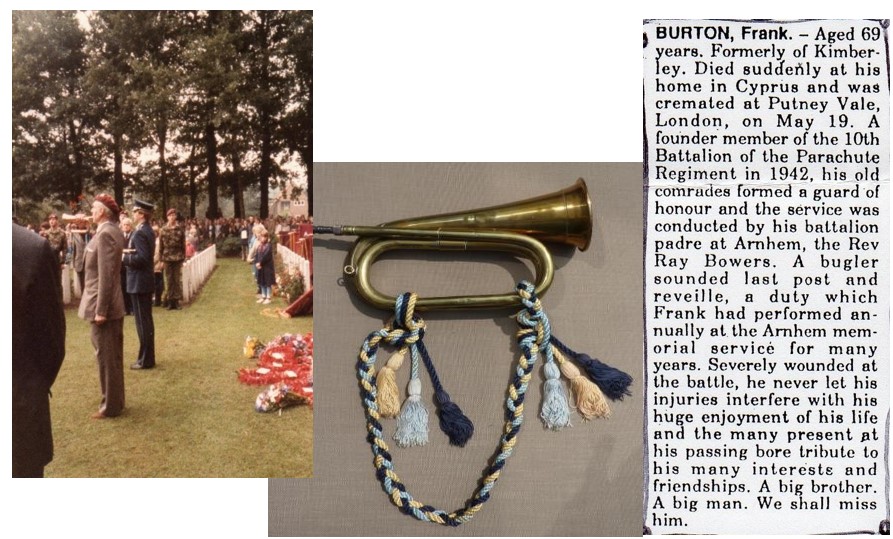
Frank’s bugle played by him during many Airborne Commemorations
July 2013 © Lt Col G. Pijpers
End Notes
We are delighted to announce that Prosper Keating has joined our hard-working team as Editorial Consultant. Not only was Prosper a long serving member of 10PARA, but he is a well renowned author and publisher in many fields. Despite malingering in a French hospital on the pretext of having a (new) heart installed, he tells me that reports, by the Regiment, of his death are greatly exaggerated! Prosper is currently working on the ‘10th Battalion Trail Guide’ which we should have on the shelves in the next few months.
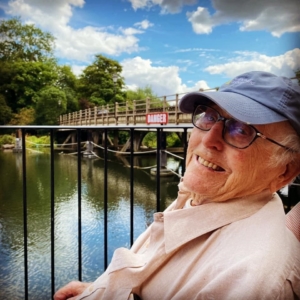
Vic, when he met Terry last November by The Thames
Victor Gregg, our ‘Last Man Standing’ looks forward to his 102nd birthday in October. Vic is physically more frail but his huge intellect is as sharp as ever. Terry Lowe is in regular contact with Vic and sends regular updates. I’m sure you will join with me in sending Vic our very best wishes and greatest respect.
In Terry’s photo in Goring on Thames, above, how appropriate for the front-line Rifleman and Paratrooper – to see the ‘DANGER’ sign! – how did they know he was coming? And good to see Vic close to his beloved Thames, which has been part of his life for over a century.
FOTT Film Productions
We will have the following films in our website shop. They are available as either a download, DVD or USB memory stick. Follow this link to order https://friendsofthetenth.co.uk/shop/
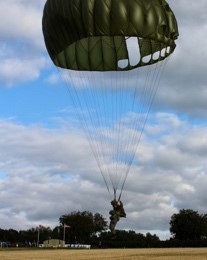 Remembering The Tenth
Remembering The Tenth
The hour-long film tells the story of the Memorial, the unveiling and includes an exclusive and riveting interview with 10th Bn Veteran, Victor Gregg, as well as a memorable introduction by Pam Henry-Lamm, the widow of Captain Myles Henry KIA. It includes IWM footage from Market Garden. Brilliantly and professionally made and directed by Thomas Hallifax and his fellow students at Brooksby-Melton Media College. A must see of that very special day last September.
Albert Willingham: Hero from England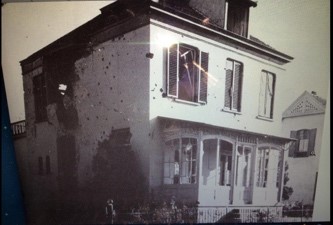
This beautiful, poignant, short film was professionally made in the Netherlands and features Dr Robert Voskuil and Jelle Vos (our Dutch mascot and poster boy) with some of his school friends, telling the story of the infamous cellar at number 2 Annastraat and Albert’s ultimate sacrifice. A perfect film to gently introduce children to the history.
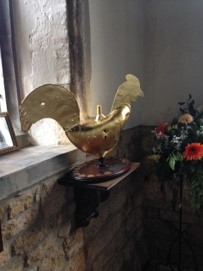 The 70th Somerby Commemoration
The 70th Somerby Commemoration
An hour-long film made in 2014 which follows the weekend in Somerby and the presentation of the Somerby Cockerel to the Bishop of Leicester (on behalf of All Saints, Somerby) by 10th Bn Veteran, Gerry Dimmock.
The unveiling photo album
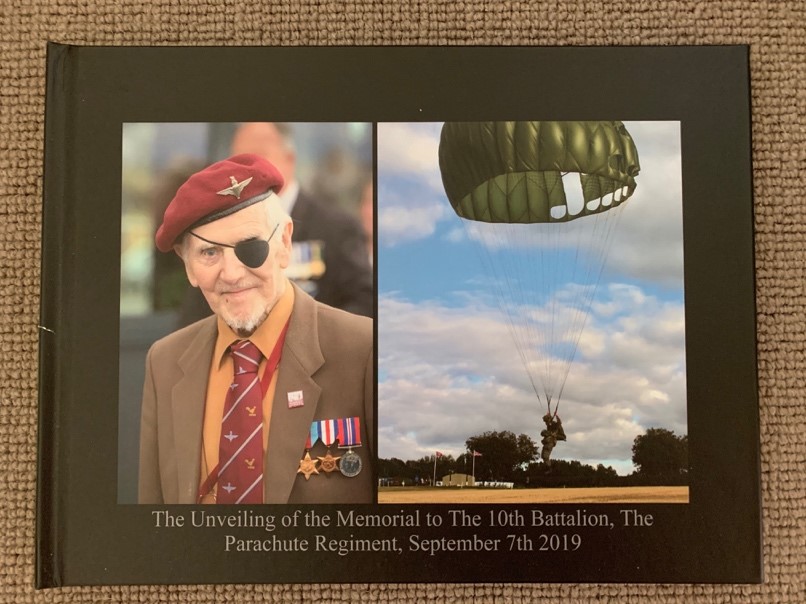
In our website shop is the photo album of the unveiling last September. This A4 high quality, hard cover, book has 58 pages of more than 150 colour images by our brilliant photographer, Arjan Vrieze. It comes in a presentation box. A lovely memento of an amazing day. Follow this link to buy a copy – https://friendsofthetenth.co.uk/product/remembering-the-tenth/
I quote our President – Jennifer, Lady Gretton;
“The most wonderful memento of a memorable day has just arrived! I think it is done most beautifully with some lovely photos and what a wonderful reminder of a very special occasion. All the heartache and worry during the preparation came to a wonderful conclusion on the 7thSeptember.
This will bring back so many happy memories for so many people and I know that everyone will say that it has certainly been worth waiting for!”
The Last Stand of The Tenth

Those of you who do not have a print of Derek Chamber’s ‘The Last Stand’ may want to buy one. We have 3 versions for sale in our website shop. Please see ‘Merchandise’ below.
MERCHANDISE
Please visit our website shop where we have for sale, Christmas cards, T shirts, ties and bowties, badges and prints.
Also of course, the films and photo album featured above.
To buy, visit – https://friendsofthetenth.co.uk/shop/
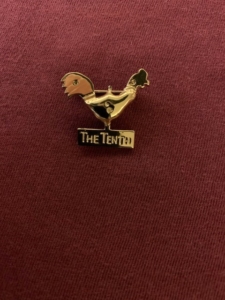 The Somerby Cockerel is a limited edition (75) hand-made, gold-plated and hall-marked, solid sterling silver pin badge.
The Somerby Cockerel is a limited edition (75) hand-made, gold-plated and hall-marked, solid sterling silver pin badge.
We also have the ‘Unveiling Package’ for sale at only £10 which includes the souvenir brochure, order of service, two badges and windscreen sticker (total value £18!).
THE FRIENDS OF THE TENTH ROSE
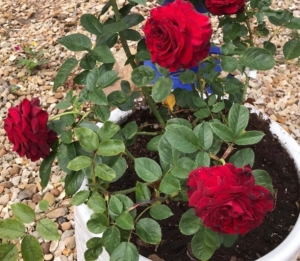
This rose was propagated to remember the Boys of The Tenth. It is the same as those that have been planted in the Memorial Garden and at All Saints church, Somerby. C & K Jones make a donation to us for each rose sold.
It is available to buy from:
01829 740663
Past & present NEWSLETTERS
Thanks to our great supporters at Reach Marketing, we have a new facility on our website. You can read, in book ‘turning page’ format, this and previous newsletters.
Follow this link – https://friendsofthetenth.co.uk/newsletters/
REQUESTS
PLEASE? If you know anyone who does not ‘do’ emails and you think would like a copy of this newsletter, would you kindly print a hard copy and forward or post it to them?
Alternatively, contact me and I will post a hard copy to anyone unable to download this.
Should anyone wish to help in any way whatsoever, I would be delighted to speak with you. There is much more information on our website and social media pages:

An easy way to access our website is to use your mobile phone to scan this barcode
If anyone would like to contribute to this magazine, I will be delighted to hear from you. Any material must be relevant to the WW2 10th Battalion or our current work to keep the legacy of the Battalion alive. We also reserve editorial rights.
You can contact me at: alec@friendsofthetenth.co.uk
Alec Wilson
May 2021
[1] Letter from Frank Burton’s niece, Sally Dyos, 9 June 2013.
[2] Certificate of discharge, serial number 36656, 14 October 1939.
[3] Certificate of service, serial number 1014, 17 January 1946.
[4] Burton was a lance corporal in 1943 but demoted after an incident helping a friend.
[5] Letter from Frank Burton’s niece Sally Dyos, 22 July 2013.
6 Interview with Frank Burton by Mr. Cees Meijer when Frank visited the Airborne commemorations in the early eighties.
7 ‘De Schaapskooi’ is Dutch for ‘sheep-shed’. During WWII the Aalbers family lived in the sheep-shed. The sheep-shed with
living quarters was situated where the ‘Papendal’ Sport Centre now stands.
[7] Interview with RAMC and Apeldoorn historian, Mr. Ruud Kreling.
[8] Record Office, Edinburgh, Army Form B.104-83A, 28th November 1944.
9 Certificate of Homecoming Eligibility, 1 November 1944.
10 Allied Personnel Repatriation Tag.
11 “Wounded at Arnhem”. Newspaper article.
[12] Obituary, Pegasus Journal, December 1992

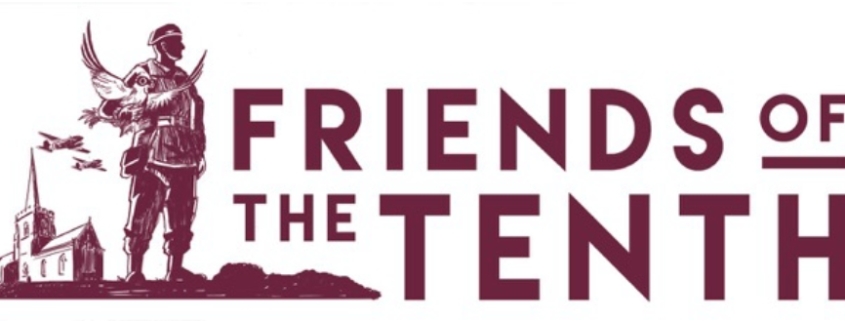


Plaats een Reactie
Vraag of reactie?Laat hier uw reactie achter.